Used by numerous religions to mark the repetitions of prayers, chants or devotions, misbaha (prayer beads) are an important part of Lebanese heritage. We learn more about the two-thousand-year-old tradition.
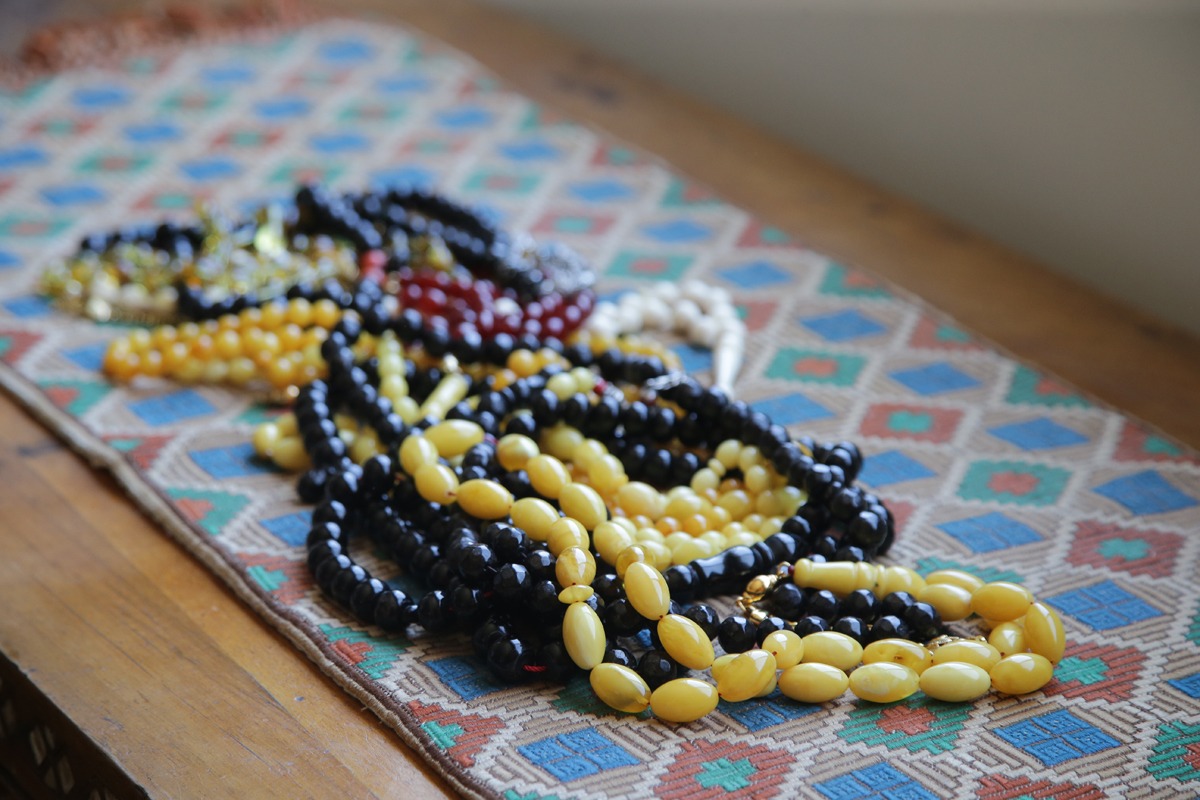 “I was 11 years old and it was love at first sight, which is even more surprising given the fact that I had no clue what I was looking at. However, I soon learned that these fascinating objects were prayer beads,” says Najib Takieddine, a Cornell University graduate, lecturer and avid collector of misbaha.
“I was 11 years old and it was love at first sight, which is even more surprising given the fact that I had no clue what I was looking at. However, I soon learned that these fascinating objects were prayer beads,” says Najib Takieddine, a Cornell University graduate, lecturer and avid collector of misbaha.
Takieddine has dedicated a lot of time to studying the evolution of misbaha. “The original Islamic misbaha comprises a 99-bead string configuration with a single elongated headpiece (imam) at the end and dividers (shawahed), separating the beads into sets of 33. The number 99 is significant as the beads help Muslims count and recite the 99 attributes of God,” he explains.
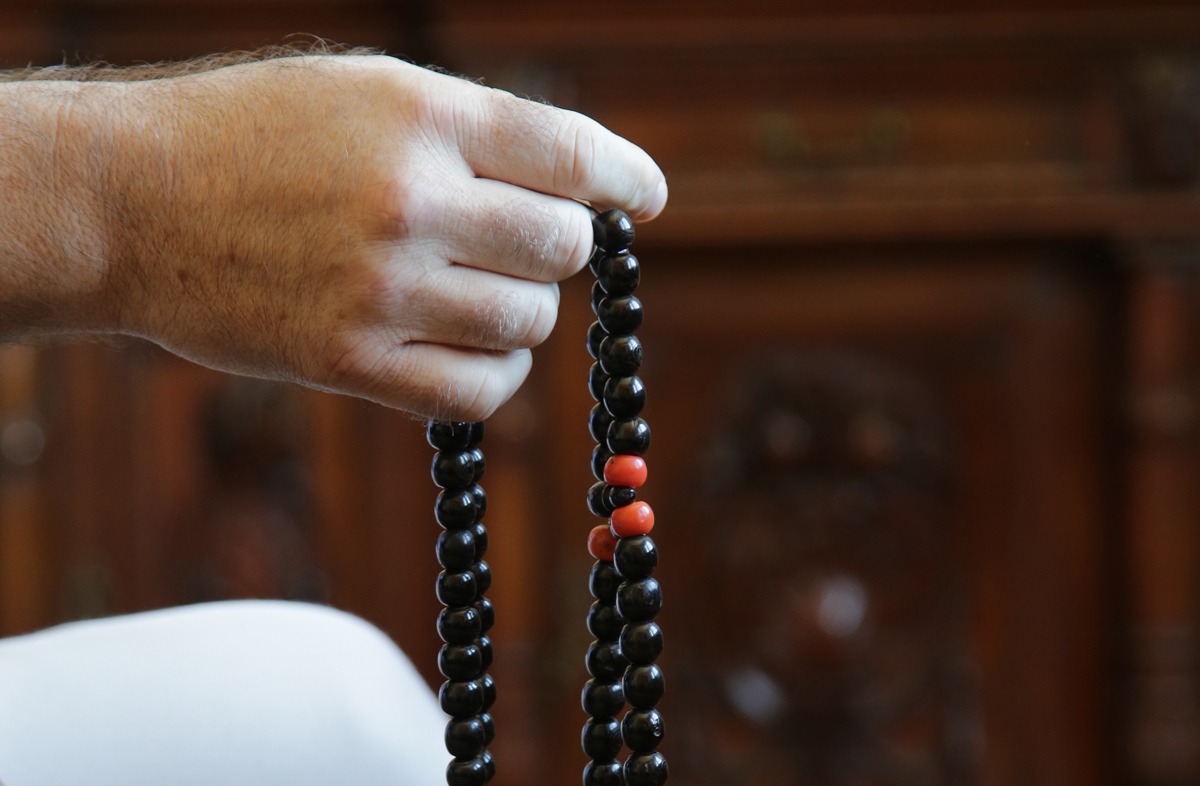 Over time, however, the length of the misbaha proved impractical and the number of beads was decreased. “There were two additional versions, namely 66 and 33; so the person using either one for prayer was able to use the string as needed to arrive at the number 99, which is quite an elegant and fitting solution.”
Over time, however, the length of the misbaha proved impractical and the number of beads was decreased. “There were two additional versions, namely 66 and 33; so the person using either one for prayer was able to use the string as needed to arrive at the number 99, which is quite an elegant and fitting solution.”
POPULAR CHOICES
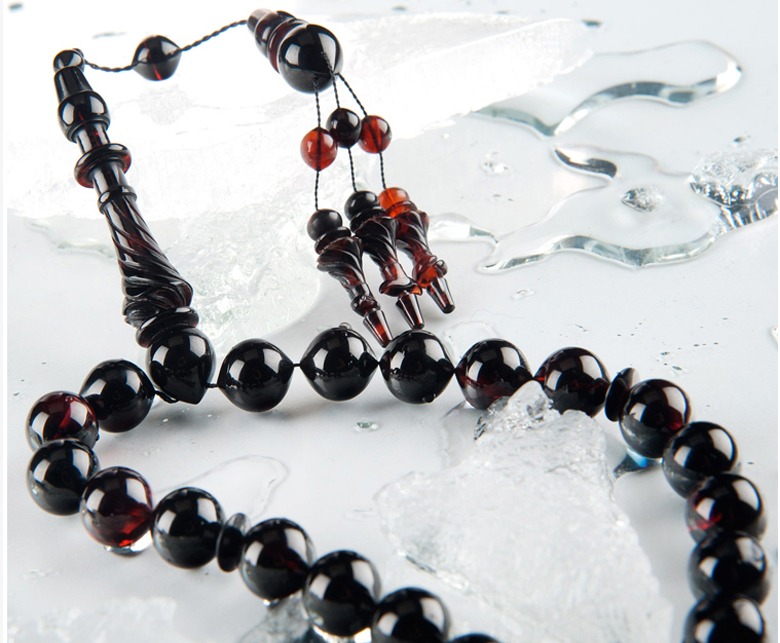
As the misbaha is a personal item, it often reflects the individual’s taste and character. “In general, the most popular choices are made of black coral (yusr), amber (kawraba) and koka (koka tree seed). Yusr exists in abundance in the Red Sea. It is a hard, black material, yet soft to touch. One way of verifying its authenticity is exposing it to a bright light and checking if it has a brownish glow,” Takieddine says. Interestingly, elements such as silver are often used to add extra flair to the beads, making them somewhat of a fashion accessory. “It is one reason why many people around the world began collecting misbaha, elevating its status to an objet d’art.”
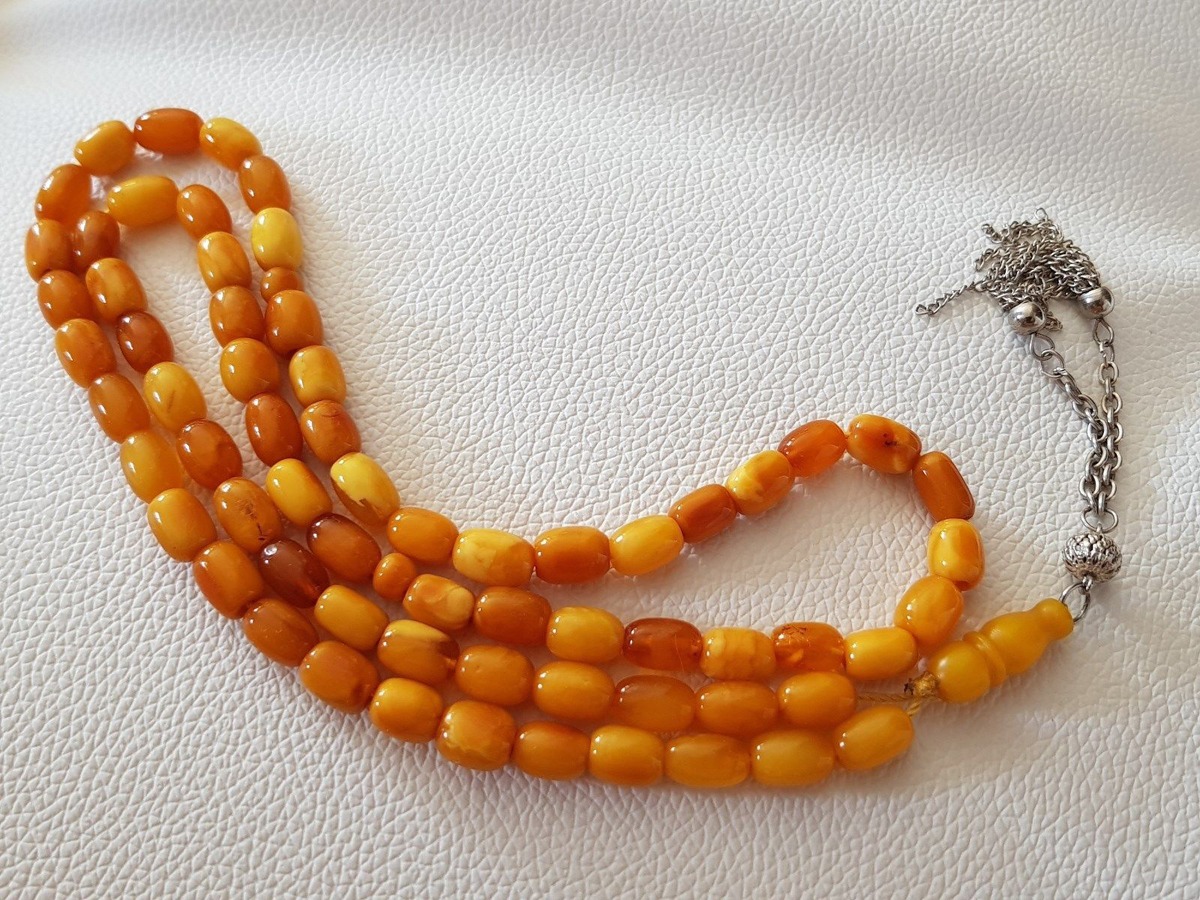 The second most popular choice is amber, which is priced according to its age, oxidation and weight. Indeed, a single gram can cost as much as 150 USD. “This substance is mainly found around the Baltic Sea. The resin, which later transforms into amber, comes from the different pine trees that used to grow there.”
The second most popular choice is amber, which is priced according to its age, oxidation and weight. Indeed, a single gram can cost as much as 150 USD. “This substance is mainly found around the Baltic Sea. The resin, which later transforms into amber, comes from the different pine trees that used to grow there.”
The age of a misbaha of this kind is generally 15-20 million years. The other major element taken into account when estimating the materialistic value of a piece is how much the beads themselves have oxidized, which occurs when natural body oils from the hand interact with the amber.
Furthermore, this process alters the amber beads from translucent to opaque. Based on that, the misbaha, which has beads dating back 15 million years, could be 15 years old based on when it was fashioned. On the one hand, the higher the oxidization the more value it acquires yet the more brittle it becomes.
That is why when it comes to collectors, an expiration date of sorts is set on the misbaha after which time it is either safely tucked away or put on display. This is necessary because in case it falls some of the beads, which may be irreplaceable, will fracture rendering the misbaha useless.
“In general, the more transparent the amber, the less expensive it is. The best way to find out if a piece of amber is genuine is to immerse it in salt water, which would cause it to float.” Takieddine explains.
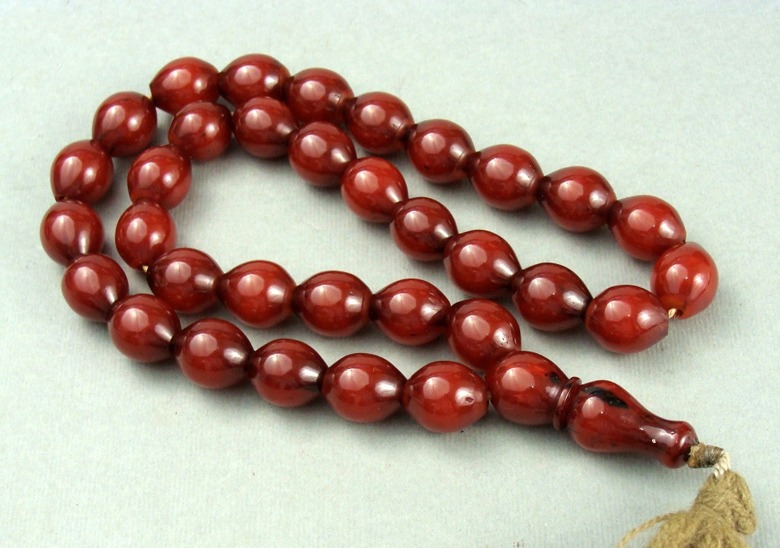 The third type of misbaha popular in Lebanon is made of red coral (merjan) and is primarily priced depending on how light or dark its color is, the latter being more expensive. It comes in numerous varieties, the primary called oxblood. Takieddine remarks, “Because the material is quite heavy, fragile and rather expensive, it has become a more suitable accessory for women. The type of coral used, found predominantly in southern Italy and Tunisia, is becoming increasingly scarce; that’s why in some countries it is now forbidden to sell or import it.”
The third type of misbaha popular in Lebanon is made of red coral (merjan) and is primarily priced depending on how light or dark its color is, the latter being more expensive. It comes in numerous varieties, the primary called oxblood. Takieddine remarks, “Because the material is quite heavy, fragile and rather expensive, it has become a more suitable accessory for women. The type of coral used, found predominantly in southern Italy and Tunisia, is becoming increasingly scarce; that’s why in some countries it is now forbidden to sell or import it.”
MISBAHA TRADERS
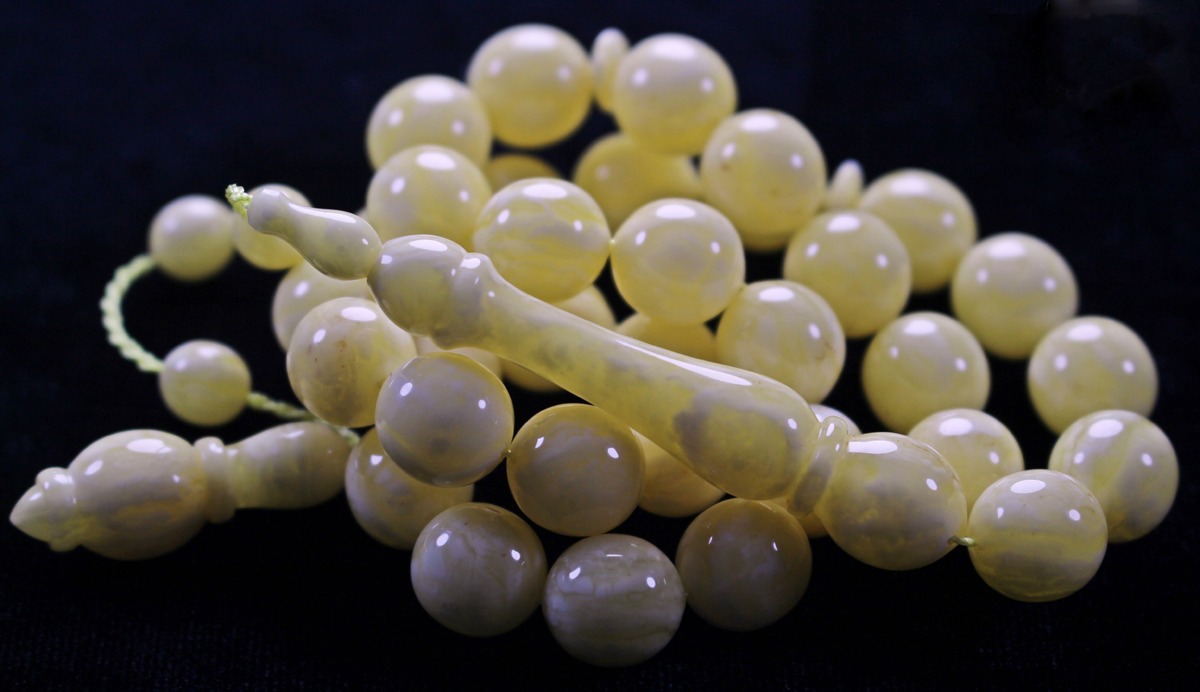
Whether you are an expert or a novice, Takieddine warns that technology today can quite accurately emulate just about any kind of material and buyers do not have access to any labs that could verify the misbaha as authentic. “That is one of the lessons I have learned the hard way, yet I was fortunate to have met two of Lebanon’s most reputable traders whom I trust and highly recommend. Walid Nader operates out of Hamra and Toufic Abdul Wahad has a store in Achrafieh. If you do not find what you are looking for then I am fairly certain they can acquire it for you,” says Takieddine.
WHERE TO PURCHASE
 Boutique Sabine Mazloum in Downtown has an exquisite collection of colorful misbaha made with valuable gems and minerals, including pearl. Prices start at 200 USD.
Boutique Sabine Mazloum in Downtown has an exquisite collection of colorful misbaha made with valuable gems and minerals, including pearl. Prices start at 200 USD.
 The boutique also showcases a prized piece, “The Missbaha of the Kings,” which features the hardest and most precious stones of all — diamonds. The brilliant cut green diamond beads shimmer in the light, while the platinum tassel is punctuated by finer diamonds.
The boutique also showcases a prized piece, “The Missbaha of the Kings,” which features the hardest and most precious stones of all — diamonds. The brilliant cut green diamond beads shimmer in the light, while the platinum tassel is punctuated by finer diamonds.
Melrose Building, Downtown Beirut, +961 1 997373.
You can find also semi-precious misbaha starting from as little as 5 USD at L’Artisan du Liban (lartisanduliban.com).
Loading


